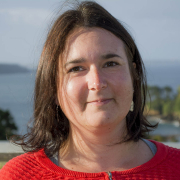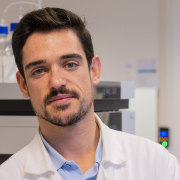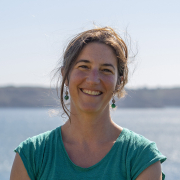Copyright : Laboratoire LEMAR- 2018
Marie Vagner
National
- Projet Emergence ISBlue
- EC2CO
- Conseil Scientifique IUEM
Start Date
05/04/2025
End Date
05/04/2025
Synthesis capacities in long-chain omega 3 for the Dicentrarchus labrax seabass: characterization and plasticity in the context of the future scenario of global warming and reduced availability of omega 3 in the food web.
Long-chain omega-3 polyunsaturated fatty acids (LC omega-3 PUFA) are major components of cell membranes of all organisms including humans, giving them a vital role in maintaining physiological functions. LC omega-3 PUFA are produced at the base of the food web, i.e. by marine microalgae, including diatoms. This production determines the availability of these dietary nutrients for higher trophic levels, such as fish that are almost unable to synthetize them. Fish are one of the main vectors of LC omega-3 PUFA from the aquatic ecosystem towards humans, in which the beneficial effects have been widely demonstrated, and what for their weekly consumption is today recommended by many authorities (FDA, AFSSA…).
Global change, through warming, acidification or hypoxia of waters leads to an overall reduction in the production of LC omega-3 PUFA at the base of the marine food web, by altering the assemblages of microalgae species and their physiology. Such decrease has been predicted to lead to membrane variability in higher consumers. In addition, temperature elevation has been shown to negatively interact with LC omega-3 PUFA dietary decrease on fish membrane composition, highlighting the need to consider these factors in combination, especially in the context of seawater warming.
Such changes in membrane composition in higher consumers, such as fish, can have large-scale consequences, altering their physiological functions and their fitness, which depends on reproductive and growth capacities in particular. This alteration is likely to cascade through population dynamics and ecosystem functioning, leading to a possible decline in the availability of these nutrients for human well-being.
This chain of consequences remains poorly studied, but raises the primary research question of how fishes would be able to physiologically adjust to these ongoing environmental changes? Answering this question will go towards the necessity to account for the unconsidered and yet existing capacity of organisms to physiologically adjust (plasticity) to environmental changes within models predicting the responses of organisms and ecosystems to global change.
Marine fish, which live in a trophic environment rich in LC omega-3 PUFA (rich in diatoms), have a very poor ability to synthesize these molecules (< 5%), as they easily find them in their diet. In contrast, freshwater fish, which are subjected to a trophic environment lower in LC omega-3 PUFA (few diatoms), have retained the ability to synthesize ~ 25% of LC omega-3 PUFA from the precursors found in their diet. The ability of euryhaline fish, including the European sea bass Dicentrarchus labrax, to activate or deactivate these synthesis mechanisms according to the type of habitat in which they are found (marine, brackish, river) remains poorly understood, as well as the energy cost associated with this type of modulation.
In this context, the objectives of this project are to:
– (1) Measure in situ the ability of an euryhaline species to synthesize LC-omega-3 PUFA in different habitats, and at different ontogenetic stages,
– (2) Evaluate the plasticity of these natural synthesis capacities by measuring experimentally their functioning when fish are exposed to a decrease in LC omega 3 PUFA availability coupled with higher water temperature,
– (3) Evaluate the energy cost at individual level of implementing such synthesis pathways.
These objectives will be conducted within strong regional (UMR LEMAR, Ifremer fish unit) and international collaborations (Inter-university Centre for Aquatic Ecosystem Research Wasser Cluster Lunz WCL/Danube University Krems, Austria). Focus will be put on D. labrax, which is of high ecological and economic importance in Europe. This euryhaline species is a cornerstone in the transfer of LC omega-3 PUFA produced in marine environments towards humans.
Laboratory Members
Contributors
Christophe Lebigre, Mickael Drogou, Martin Kainz, Maria Angelica Martinez Silva




















